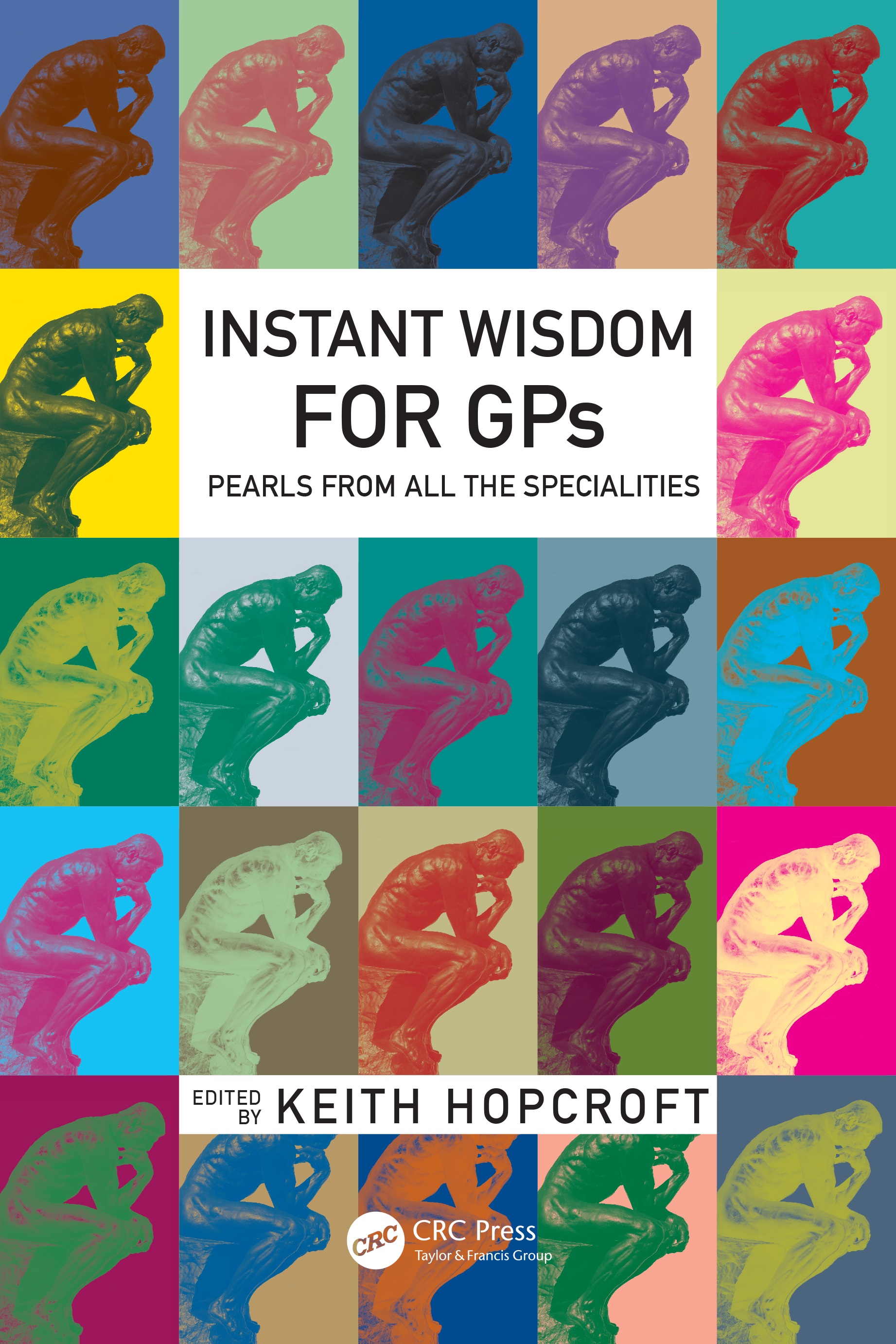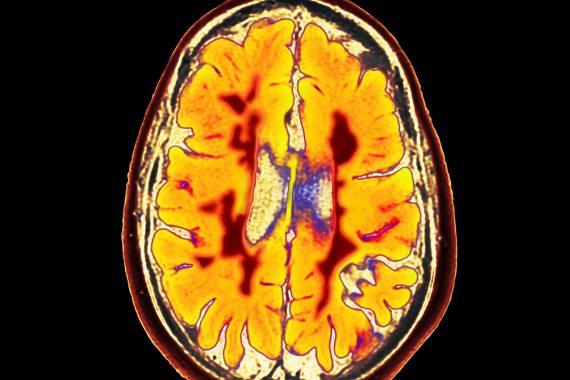Five quick tips
1. Sensory symptoms are very common and usually harmless
Numbness, tingling and pins and needles – with or without pain – are exceedingly common, usually entirely benign and the specific cause often difficult to identify. The most common ‘trapped nerves’ are median nerve (lateral hand), ulnar (ring and little fingers) and lateral cutaneous nerve of the thigh (obvious). Most patients presenting with sensory disturbance, especially if intermittent, need reassurance not referral.
2. Most headache is benign
Although headache causes much misery for patients, very few represent anything sinister. Don’t worry too much about brain tumours – they are rare, generally incurable and rarely cause isolated headache. Instead, concentrate on accurately diagnosing and treating migraine (paroxysmal headaches with associated systemic upset), chronic daily headache (need diagnosis and reassurance), the occasional subarachnoid haemorrhage (refer anyone with a headache, maximal immediately or within minutes, lasting longer than one hour) and temporal arteritis (always over 60 years old, usually much older, look and feel awful). Remember mechanical neck disorders and depression commonly cause headache, but stable hypertension does not. Sinusitis causes acute facial pain with other infective symptoms, not chronic headache. And suggesting an eye test may be a good way to end a consultation, but rarely will explain your patient’s symptoms.
3. Vertigo usually originates in the vestibular apparatus, not the brain
Vertigo is the illusion of movement in any plane (not just spinning), and should be distinguished from ‘dizziness’, ‘lightheadedness’, ‘giddiness’, and so on. Acute vertigo is most commonly due to acute vestibular failure (vestibular neuronitis) – usually profoundly unpleasant and debilitating, and settling after a few days. Transient vertigo occurring in bed or on getting up is usually benign paroxysmal positional vertigo. Brain causes of vertigo are rare, with migraine being the most common. ‘Cervical vertigo’ is a common diagnosis in ENT clinics, but does not exist. Nor does ‘vertebrobasilar insufficiency’: older people may feel dizzy when looking up, but this is common, and usually due to vestibular pathology, if any.
4. Know how to tell tremors apart
Both arms shaking when picking up cups or cutlery is usually essential tremor (ET). Do not be misled by a family history of Parkinson’s disease (PD); this may be inaccurate, because a family history is far more likely in ET than PD. Head tremor is never PD, but usually either ET or dystonic tremor. One-sided tremor (usually an arm), especially at rest, and improving briefly on picking up a cup, suggests PD. Other clues may include the early non-motor symptoms such as hyposmia, depression, constipation and REM sleep behavioural disorder. Always consider PD in a patient with a treatment-resistant frozen shoulder.
5. A neurological examination is rarely of benefit in primary care
The value of a neurological examination by the non-specialist is over-rated. Most common neurological symptoms (headache, focal symptoms, funny turns/blackouts) are not associated with (real) signs and most doctors never learn to examine the nervous system adequately. It is far better to concentrate on the history, which will allow you to decide whether referral is required and if so, to whom. If you must examine, make it count (e.g. if you suspect a TIA, take the pulse and blood pressure, but do not bother with the nervous system).
Obscure or overlooked diagnoses
Trigeminal autonomic cephalalgias
The most ‘common’ is cluster, but others include hemicrania continua, paroxysmal hemicrania and short- lasting unilateral headache with conjunctival injection and tearing (SUNCT). They are all characterised by unilateral head pain, usually severe, lasting seconds to hours, associated with autonomic features (eye watering, red conjunctiva, ptosis, nasal stuffiness). Their management is different from other headache syndromes, so early identification is key (see www.ouchuk.org).
Transient global amnesia
Patients abruptly develop a profound anterograde amnesia and variable retrograde amnesia. They otherwise appear normal, but repetitively and irritatingly question, as their immediate recall is not functioning. The symptoms resolve completely after a few hours, although they remain amnesic for the attack period. It is usually isolated, occasionally recurs and requires only reassurance – TGA is not a TIA.
Exploding head syndrome
Despite the name, it is entirely benign. Patients describe a sudden bang or explosion within the head, without pain, sometimes with a flash of light, usually as they are waking up. Although it terrifies them (and doctors who do not recognise it), it needs reassurance only. It can recur.
Easily Confused
Reflex syncope (fainting) and epileptic convulsion
| Reflex syncope | Epileptic convulsion |
|---|---|
| Typical scenario and triggers: e.g. bathroom, restaurant/eating, healthcare setting, pain | Any scenario and usually no triggers |
| Warning: e.g. feel faint/sick, vision dims, tinnitus/deafness | Often no warning or focal onset |
| Witness: brief LOC, pale, still, sweaty, may have brief stiffening, myoclonic jerks | Tonic cry at onset, stiffening of limbs with arms flexed, legs extended, blue/purple colour, then clonic phase, usually 1–2 mins, blood/foam from mouth |
| Recovery: rapid, recognise those around them, embarrassed rather than confused, may vomit, ‘wake up’ long before paramedics arrive. Typically hear before they can see | Enter deep sleep with heavy snoring, gradual recovery over 30 mins, often fail to recognise those around them initially, occasionally aggressive, amnesic for this period, ‘wake up’ in ambulance or hospital |
| Injuries rare, indeed ‘red flag’ for typical faint | Bitten lateral border of tongue, myalgia for days, rarely shoulder fracture/dislocation. Carpet burns suggest non-epileptic attack |
Benign sensory symptoms and multiple sclerosis
| Benign sensory symptoms | Multiple sclerosis |
|---|---|
| Intermittent periods of normality | Evolve over few days, persist for days to weeks, then gradually resolve, with no periods of normality |
| Often disobey anatomical boundaries, or restricted to specific peripheral nerve | Typically spinal cord (ascending bilateral numbness of both legs) or cerebral (hemisensory or arm/leg) |
| No previous neurological symptoms | May be previous suspicious symptoms – e.g. transient disturbance of vision |
TIA and migrainous aura
| TIA | Migrainous aura |
|---|---|
| Short, usually <10 minutes | Typically 10–30 minutes |
| Abrupt onset/offset, little/no evolution | Typically evolve and change over period |
| Strictly anatomical | Symptoms often cross anatomical borders |
| Negative symptoms (e.g., loss of vision) | Positive symptoms (e.g., flashing, fortificationspectra) |
| Usually isolated | Recurrent, often over long periods |
Benign memory disturbance and early dementia
| Benign memory disturbance | Early dementia |
|---|---|
| Usually younger people (<60 years) | Older |
| Attend alone | Brought in by relative |
| Subjective symptoms (no one else noted problems) | Patient least aware of problems |
| Able to give detailed history | Often vague, denying problems |
| Still able to read, follow films/dramas, etc. | Often stopped |
| Considerable variability | May vary but less so |
Prescribing points
Analgesia for headache
The natural inclination to escalate analgesia for headache is rarely successful and usually encourages medication overuse headache and adverse effects that confuse matters (such as vomiting due to opiates leading to concern about more sinister headache).
Measuring blood levels of anti-epileptic drugs
In short, don’t. The only persuasive indication is to see whether a patient is actually taking their prescribed drug. Although levels may confirm drug toxicity, this is always a clinical diagnosis, not a number on a blood test. Anyone on phenytoin or carbamazepine complaining of unsteadiness/ataxia/diplopia is toxic until proven otherwise.
Vestibular sedatives
These are rarely helpful in the management of long-term ‘dizziness’ and can prevent recovery. They are not effective in BPPV, and long-term prochlorperazine and metoclopramide can both be associated with tardive dyskinesias.
Dr Richard Davenport is a consultant neurologist at the Western General Hospital and Royal Infirmary of Edinburgh and an honorary senior lecturer at the University of Edinburgh
This is an abridged version of a chapter in Instant Wisdom, a guide for GPs distilling years of knowledge, experience and key evidence into 25 easy-to-read chapters, each one covering a different specialty. Pulse is offering an exclusive 15% discount to GPs on the recommended retail price. To take advantage of this offer, visit crcpress.com/9781138196209 and enter PUL15 at the checkout.

Pulse October survey
Take our April 2025 survey to potentially win £200 worth of tokens

Visit Pulse Reference for details on 140 symptoms, including easily searchable symptoms and categories, offering you a free platform to check symptoms and receive potential diagnoses during consultations.















